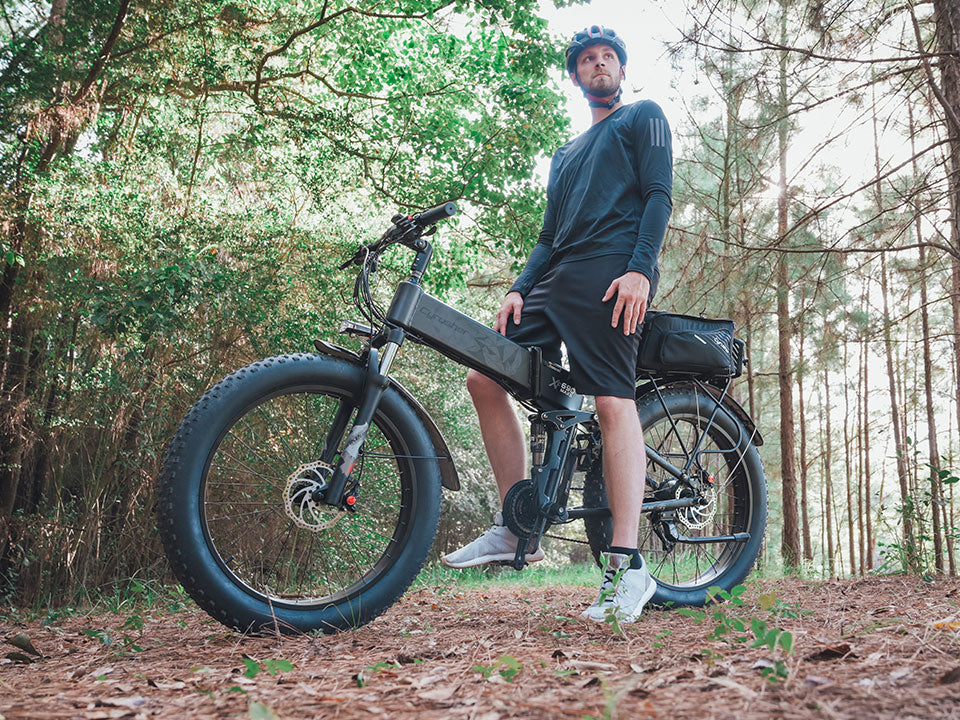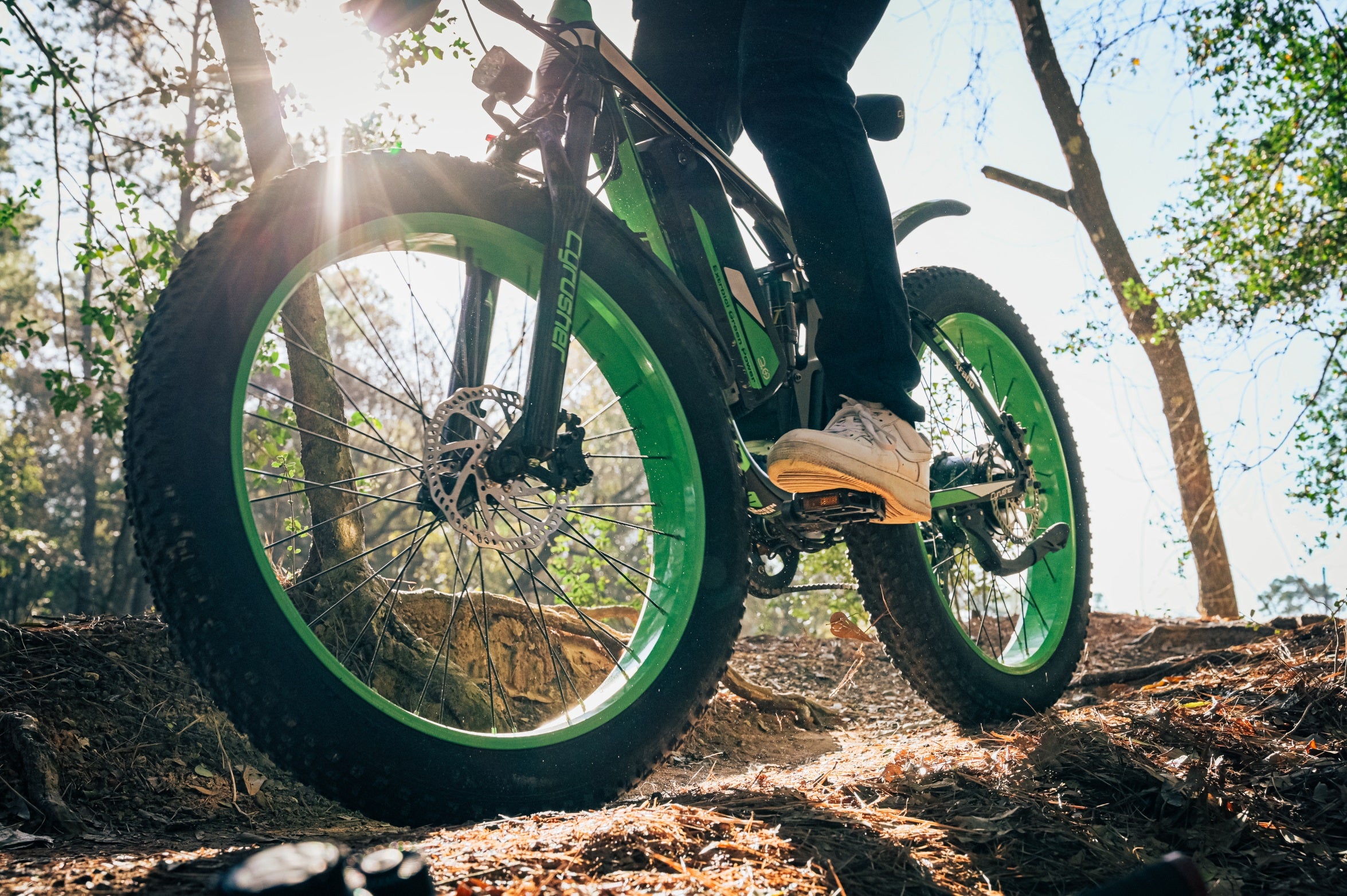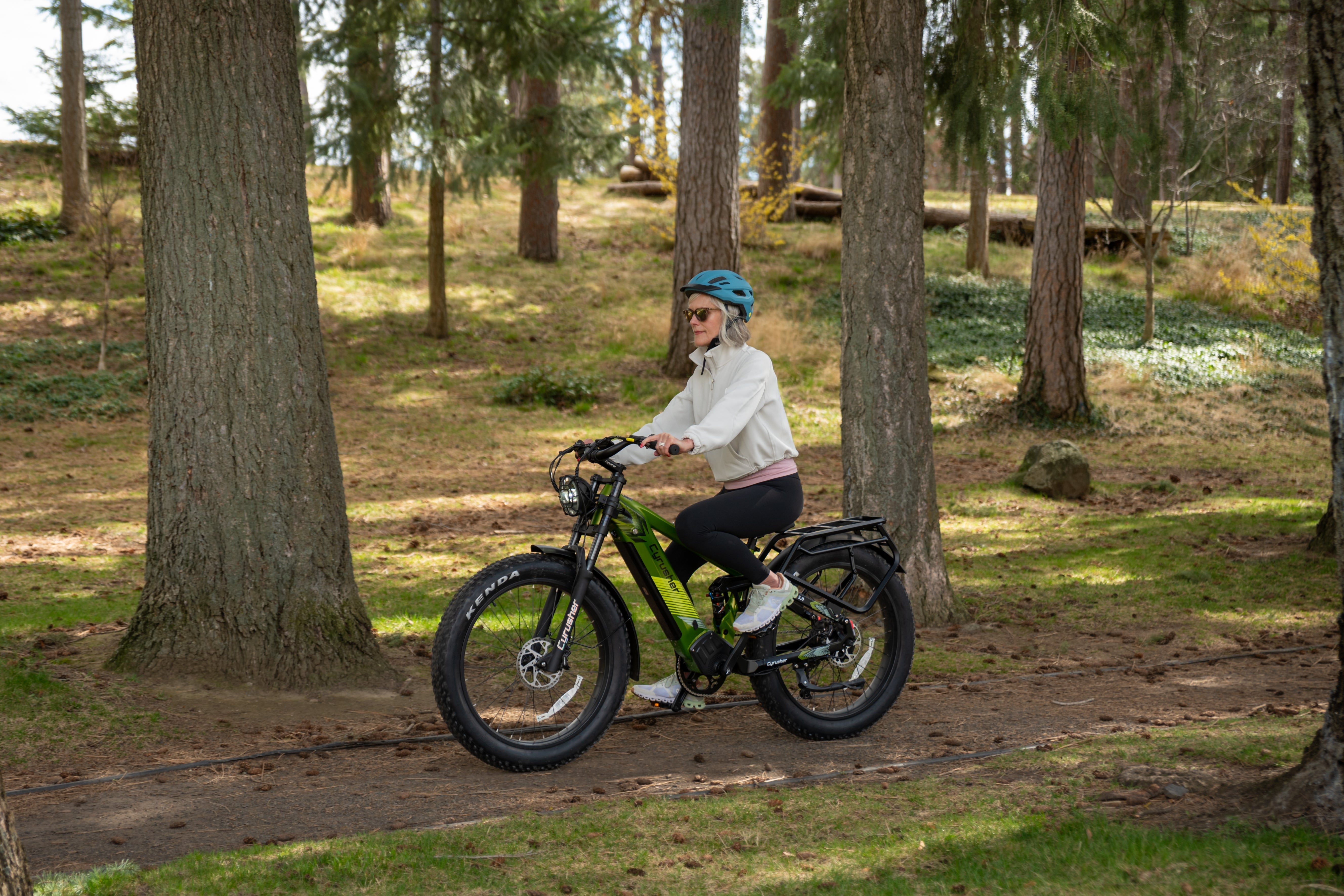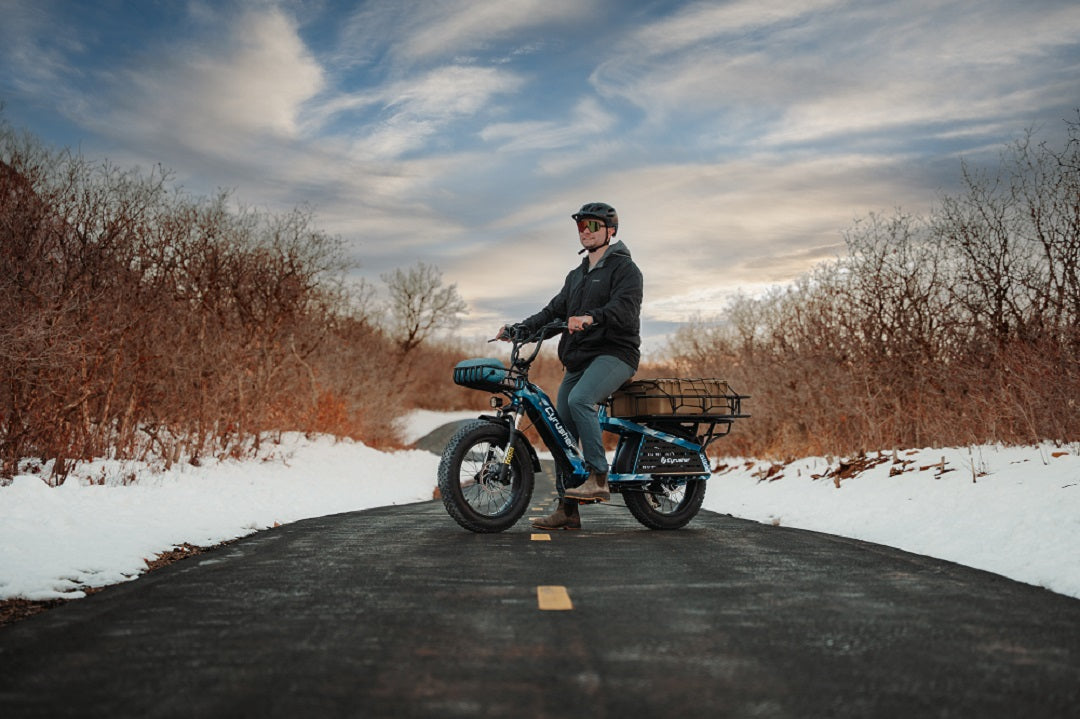Why are electric bike brakes so important? Are you annoyed by the sound of a wrong brake configuration while riding? Most professional electric mountain bike brands on the market like Cyrusher and experienced riders will stress the importance of safe braking. To get the brakes working at their full potential for everyday riding or mountain trail riding, it's a good idea to explore how brakes work and the difference between mechanical and hydraulic brake types. After all, the braking of an electric bicycle is an influencing factor for the rider's riding comfort and it is also essential to guarantee riding safety.

How Do the Brakes of an Electric Bike Work?
As the name suggests, the brake of an electric bicycle is generally a mechanical anti-motion device that can slow down the bike's speed. Standard bicycle brakes rely on rod brakes or disc brakes fixed on the frame, which allows the fast rotating wheels to slow down under the friction of the brake pads. While some brake mechanisms are mounted on the frame near the upper part of the wheel, disc brakes are mounted on the center of the bike's front and rear wheels. These pause the bike by squeezing the brake pads against rotors mounted near the hub.
What Are the Advantages of Disc Brakes?
As technology has advanced, disc brakes are now the brake of choice for most e-bike models. These types of brake pads act on metal rotors that are attached to the hub. Rim brakes are a typical setup for conventional bicycles. Since e-bikes come with motors, battery packs and fat tires, they are heavier than traditional bicycles and have stricter requirements for brakes. Disc brakes make room for wider tires, which is why they have become popular among electric mountain bikes built for endurance and adventure.
Although disc brakes are more expensive to purchase, they have many advantages. For example, they are not prone to wear and tear, even in wet or dirty conditions. Bikes with disc brakes can still be ridden with damaged spokes or rims, providing the rider with safer stopping power.

What Is the Difference Between Mechanical Disc Brakes and Hydraulic Disc Brakes?
Disc brakes are divided into two types according to different environments where they can be used and the characteristics of electric bicycles. These are mechanical and hydraulic.
-
Mechanical Disc Brakes:
Operated by cables, brake levers and mechanical discs, they are easy to use, like most rim brakes. The mechanical brake cable is filled with air by pulling the brake cable with the brake lever, then adjusting the brake caliper to squeeze the brake pads tightly against the rim and bring your e-bike to a stop. -
Hydraulic Disc Brakes:
Pulling the brake lever in a hydraulic system moves a piston in the master cylinder which pushes the brake fluid toward the brake calipers. This acts on the pistons in the brake calipers, pushing the pads against the disc rotors. Hydraulic brakes, on the other hand, compress a special fluid when the brake lever is engaged before engaging the caliper.

To better present the difference between the two braking devices of electric bicycles, the following table will take the Cyrusher XF650 electric bicycle with wire brakes and the Cyrusher XF800 with oil brakes as examples and compare the two bikes.
|
|
 |
|
|
Brake Type |
Mechanical Disc Brake |
Hydraulic Disc Brake |
|
Advantage |
– Easier replacement – Cheaper – Easy maintenance |
– Greater braking capacity – Good sealing, less cleaning – Low friction during operation |
|
Shortcoming |
– Low braking force/low efficiency – More frequent adjustments – Friction will make it less smooth – Braking requires more force |
– More expensive – Requires special tools and fluid maintenance – Need to deflate the pipeline periodically |
|
Recommendation |
Outdoor cycling backpacker |
Mountain trail rider |
The above table shows the differences between the advantages and disadvantages of mechanical disc brakes and hydraulic disc brakes. Mechanical disc brakes are more accessible to service and replace, while hydraulic disc brakes provide greater and more effective stopping power due to the cable setup. Oil brakes are more suitable for some adventurous riding environments, while line brakes are more suitable for use in environments with relatively stable terrain.
Are Hydraulic Disc Brakes More Valuable Than Mechanical Brakes?
Hydraulics are more valuable than mechanical disc brakes. This is because you need to put less pressure on the lever to get the same level of stopping power which means you get better modulation.
Hydraulic disc brakes also provide greater stopping power because they have a larger contact area that facilitates the heat dissipation. They also rarely break down, are more reliable at high speeds and work better than mechanical brakes in wet and muddy conditions.
In addition, the entire system of hydraulic disc brakes is hermetically sealed which greatly reduces the possibility of contaminants such as mud, gravel and dust entering the hydraulic system.
Suppose you are often in a crowded environment during your daily commute, or you need to ride at high speed on bumpy roads. In that case, you will find the benefits of disc brakes, especially hydraulic disc brakes, for giving you the power to smoothly control the front and rear wheels and stop consistently.
Do I Need Hydraulic Brakes on an E-Bike?
Hydraulic brakes are more easily controlled and they will also be smoother. So, do riders have to choose hydraulic brakes?
Hydraulic and mechanical disc brakes have advantages and disadvantages for different riders and environments. When choosing a brake type, try to consider the following factors first.
Cycling Conditions and Budget
The need for hydraulic disc brakes depends on the rider's actual riding conditions. In urban commuting, too much braking force is unnecessary and mechanical and hydraulic braking are good choices. Hydraulic brakes are more efficient and will be better than mechanical disc brakes in terms of braking stability and effectiveness, but they are more expensive. For example, a Star-Union hydraulic brake for several Cyrusher models of e-bikes costs $150.
If you choose to ride on mountain trails, mechanical brakes are more than adequate for your terrain and are easier to service and maintain. When you want to do some racing, the best hydraulic emergency brakes can deliver better performance.
Ease of Maintenance
Spare parts for hydraulic bicycle brakes are more difficult to obtain and more professional maintenance is required compared to mechanical brakes. Finding replacements for calipers, levers, brake fluid and brake lines or maintenance tools can be difficult. For riders living in remote areas, you may have to go to a high-end bike shop before getting the necessary parts. This also shows that hydraulic brakes are more expensive to maintain. If you often ride long distances on relatively stable roads, mechanical brakes are a good choice. When you encounter brake failures on the road, you can quickly adjust them.
If you are worried about the maintenance of hydraulic brakes, you can check out the video about changing the oil of Cyrusher hydraulic disc brakes. If it does not seem easy, you can also try to seek help from local offline stores or professional bicycle maintenance experts.
The Relationship Between Tires and Brakes
Braking isn't the only thing that makes an electric mountain bike stop in an emergency. The rider's controls, the ride's slope and the tires' size all play a role. When riding at high speed on a slippery road the tires may slip. Compared with mechanical brakes, hydraulic braking is better to help the tires get enough braking force to lock the wheels.
Wider fat tires have more grip and are more likely to contact the road. Wider tires have more friction with the ground when you apply the brakes and hydraulic brakes are better at controlling high-speed fat tires and stop faster.

Overall, hydraulic disc brakes provide better performance in safe braking. With the acceptance of disc brakes, the technology of safe braking will continue to improve. Hydraulic brakes and mechanical brakes will always have a place in the installation of electric bicycles. Riders who understand the difference between mechanical and hydraulic braking can have a better riding experience. Most of Cyrusher's electric fat bikes come with full hydraulic disc brakes, perfect for safe riding. You can go to the offline store to try this high-quality brake performance. For the maintenance of the hydraulic system, you can also quickly contact professionals on the official website and better enjoy your riding.
Black Friday Sales: Up to $300 Off on E-bikes.
You may also like:
- Electric Bike Batteries Are Installed in Different Locations -- What's the Difference?
- Does My Electric Bike Need Gears?
- What is affecting your mileage range?
- Why do people choose Cyrusher?











Share:
Can I Ride a Cyrusher Electric Bike in the Rain?
How to take your furry friend on an electric bike